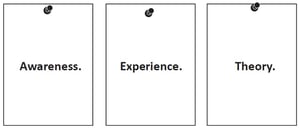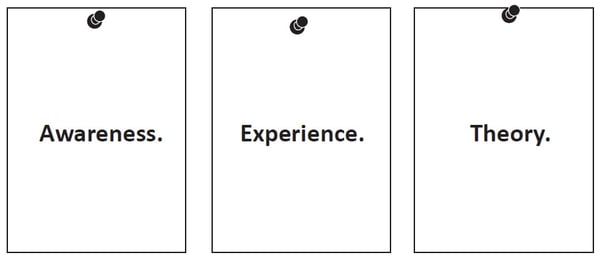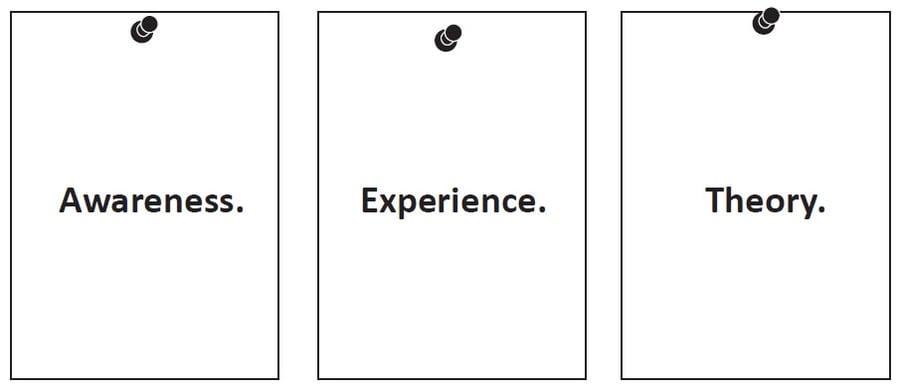


Be sure to include EAT in your Instructor-Led, Participant-Centered training session. I’ll explain below what it is and then show what it looks like in practice. This is an essential learning module for effective training design.
The EAT principle helps us engage the four major areas of the cortex at the same time. The order of this process will vary depending on what you're training and on the audience. According to Neuroscience of Adult Learning (Johnson and Taylor 2006), “The more regions of the cortex used, the more change will occur.” The four major areas of the neocortex are: sensory, back-integrative, front-integrative, and motor.
Experience = Experience something first.
Awareness = Gain an awareness of what happened during the experience.
Theory = Receive an explanation of the theory behind the experience.
The order of these three elements may change depending on whether the learners have prior knowledge of the content. Providing the opportunity for participants to experience the content allows them to actively engage in a trial-and-error approach. When the group is then asked to discuss the content, they have more to contribute. Sharing the theory at the end of this helps fill in the gaps. People’s brains naturally want to have the complete information and are more focused when reviewing the theory which helps increase learning retention.
This again ties back to the social component of learning.
Social learning allows for participants to process and retain more information by discussing the concepts with a partner or in a small group. The lessons learned by asking other participants related questions and hearing real-life feedback are invaluable.
Help People Learn Twice as Much in Half the Time
The Bob Pike Group has helped 95% of Fortune 100 companies with measurable training and performance solutions. There are several workshop options to choose from:
Learn how to write effective training objectives with this “Free Guide: 5 Tips for Writing Effective Objectives.”
Don't miss out on updates and chances
to sharpen your skills with participant-centered learning.




3740 N Chestnut St #113 - Chaska, MN 55318-3053